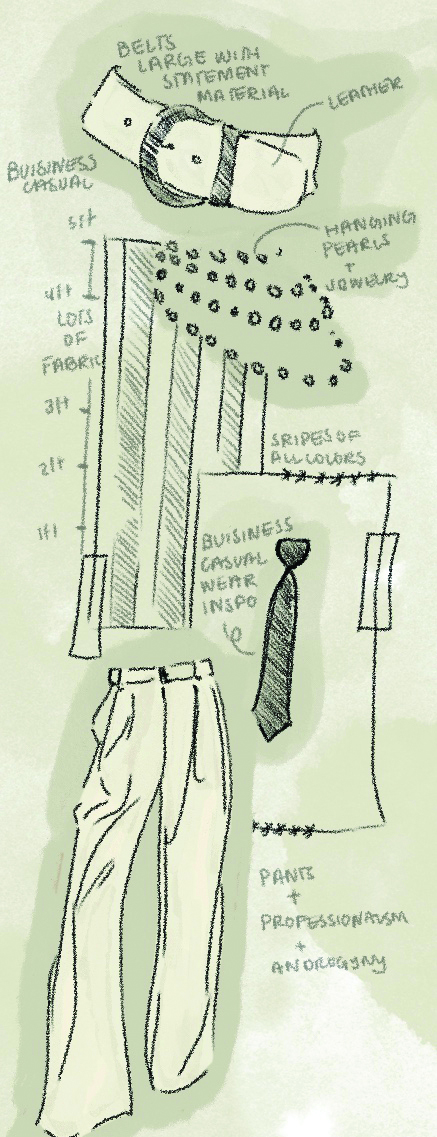
By Eleanor Berger, Audrey Loo, Allyson Oh, Bella Rhow, Faye Raad & Emma Yanai
What are eating disorders?
Eating disorders are complex and can be difficult to diagnose or recognize. Some causes include personal stressors; biological, psychological and environmental factors such as media; and the way images are altered by software such as Photoshop and Facetune. Many eating disorders include a feeling of loss of control, and many individuals who have eating disorders may simultaneously experience other disorders like depression or anxiety. According to the US Fed News Service, eating disorders affect up to 30 million Americans; four out of ten individuals have either personally experienced an eating disorder or know someone who has. Some well-known eating disorders are anorexia nervosa, bulimia nervosa, binge eating, body dysmorphia, malnutrition, pica and food addiction. Less commonly known eating disorders are night eating syndrome and orthorexia.
According to the US Fed News Service, Americans spend over $40 billion on dieting and diet-related products each year, and 25% of American men and 45% of American women are on a diet on any given day. According to “The Daily Beast,” dieting often comes with eating disorders and has become a norm for so many people across America, making obsessing over what we eat look acceptable according to.
One such diet-related disorder is anorexia nervosa, which is causes one to obsess about weight and what one eats. People with this disorder often starve themselves, over-exercise and have an abnormally low body weight.
Bulimia nervosa involves binge eating, followed by methods to avoid gaining weight, such as purging (throwing up). Physical signs of bulimia include noticeable fluctuations in weight, though unlike some other eating disorders, not all people who suffer from the disorder are underweight. Since bulimia involves purging and throwing up, stomach cramps and other non-specific gastrointestinal complaints such as acid reflux can be associated with the disease. A nationwide survey of more than 3,000 men and women published in the journal “Biological Psychiatry” in 2015 found that 1% of the population has bulimia and that the largest cause of death related to bulimia is suicide.
Binge eating involves recurrent episodes of eating large quantities of food, often very quickly and to a point of discomfort. The disorder causes a feeling of lost control during the binge and creates a feeling of distress, shame or guilt. According to the US Fed News Service, girls who diet frequently are 12 times as likely to binge as girls who don’t diet, and men constitute 40% of those exhibiting binge eating disorder.
Pica involves eating substances that are not food past the age of two years old such as drywall, paint chips, and wall insulator. These foods do not contain a significant nutritional value. Those who have pica commonly eat dirt or clay and are often women from rural areas. The Handbook of Clinical Child Psychology currently estimates that prevalence rates of pica range from 4–26% among institutionalized populations.
Food addiction is when one becomes dependent on a certain food, often junk food, in the same way drug addicts are addicted to drugs. These foods often trigger feel-good brain chemicals, such as neurotransmitter dopamine. This causes the brain to look for more of this chemical and become dependent on the chemical.
Night syndrome is when one typically eats less during the day but a lot at night. This occurs more frequently among people diagnosed with insomnia.
Orthorexia is when one has an addiction to eating foods that are deemed as healthy. Someone diagnosed with orthorexia usually avoids specific foods due to a belief that they are harmful. An example would be excessive “clean eating” such as high levels of leafy greens coupled with little to no protein, carbs and fat.
Eating disorders can lead to malnutrition. Malnutrition is a lack of sufficient nutrients in the body. This can cause dizziness, fatigue and weight loss. Malnutrition can be caused by a lack of nutrient-rich food. People don’t get all the right foods they need in their diet by restricting intake of important foods.
Body dysmorphia is a psychological factor that can contribute to eating disorders. It involves an obsessive focus on a perceived flaw in one’s appearance, ranging from thinking that one is too fat, too thin or not curvy enough. This may cause excessive exercising and often leads to cosmetic procedures such as nose jobs, buttock augmentation, breast implants, biopsy, and liposuction surgery. According to the US Fed News Service, bullying about body size and appearance is the most common form of bullying in schools, and 42% of first- through third-grade girls want to be thinner. Bullying and worrying about body appearance can lead to bigger issues as one grows up, such as an eating disorder like body dysmorphia.
Causes of eating disorders
Eating disorders are heavily influenced by cultural and familial aspects within an individual’s personal life, according to Bridget Engel, PSY.D. and Kathryn Patricelli, MA from Gulf Bend Center.
Family plays a significant role in the causation of eating disorders through enmeshment, described by Gulf Bend Center as “a psychological term describing a symbiotic and overly-intimate relationship in which the emotional and psychological boundaries between two people are so obscure or unclear that it is difficult for them to function as separate individuals with their own identities.” When a parent is excessively involved and overprotective, the child is not allowed any space for individualism or freedom. Enmeshment may lead a child to believe the only thing they feel they can control without the company of their parent is their body or the amount of food they eat. This could eventually cause an eating disorder.
Extreme academic, social, or external pressures to look a certain way also often lead to problems within children’s eating habits because they believe they can achieve success through being thin.
Eliza ’19 said she thinks people encourage unhealthy habits and unrealistic standards until they can no longer ignore the symptoms of an eating disorder.
“We’re okay with women hurting themselves to look beautiful or fit a certain way of being as long as it’s to a certain limit,” she said. “It’s a very confusing message to get as a young girl, because everyone’s okay with you doing it as long as you’re not doing it so much that they can’t ignore it.”
In addition to familial life, cultural ideals can also affect an individual’s eating habits. According to psychotherapist Sam Louie, who received a Master’s degree in Clinical Psychology with from Azusa Pacific University, “Dr. Hiroyuki Suematsu, a professor of clinical psychology at Nagoya University, says Japan’s anorexia nervosa rate is ten times higher than it was 30 years ago. There were no reported cases of bulimia 40 years ago. Today, it’s the country’s biggest eating disorder problem.” Particularly in Asian American culture, there has been an ongoing pressure to conform to Western beauty standards, such as being thin, having whiter skin, and getting double eyelids through surgery.
“The standard right now is for Asians and . . . all cultures to be slim and fit, so everyone wants to and tries to be like that through eating disorders,” said Annalise ’21.
Not only are eating disorders more prominent in Asian-American culture, but according to the National Eating Disorders Association, black teenagers are more 50% more probable than white teenagers to attain a certain eating disorder such as bulimia, binging or purging. Most cultural minorities living in America feel pressure to heed to Western beauty standards, including losing weight, which leads to the rise of eating disorders. In another study of teenagers, the researchers found that Hispanic teens were significantly more likely to suffer from bulimia nervosa compared to the rest of their white counterparts.
Two common factors contributing to eating disorders come from psychological issues and social media. These play a big role in many people’s lives. Disorders such as depression, anxiety, substance abuse, self-injury, OCD (obsessive compulsive disorder), and BDP (borderline personality disorder) are the most common mental illnesses. According to The Center for Discovery, certain personality traits such as, difficulty in managing emotions, anger and impulsiveness can be seen as underlying causes to eating disorders. Social media is a major platform that grows with people everyday. It can have major influences people’s mental state. Both of these greatly impact eating disorders.
Men and women are usually diagnosed in their teens with eating disorders but they can occur at any age. Mental illnesses can come from, coexist with or cause eating disorders. Coexisting disorders are called dual diagnoses and must be medically diagnosed by a doctor. Most people are just treated for the eating disorders and not the underlying problems. If they do not get treated correctly, it can make the person more likely to relapse and have the same problems as before. Depression and anxiety are the two most common mental illnesses that can be the source of a person’s eating disorder. They are both described as usually coexisting with eating disorders.
Another factor that can affect eating disorders is social media. Social media grows rapidly by the minute. It influences people’s perspectives of themselves and society. Many young people have some sort of presence online, whether it is on Instagram or Snapchat. According to the National Eating Eating Disorder Association, it is human nature to compare yourself to others and to want what other people have. Although social media is not solely responsible for eating disorders, it can cause damage to one’s mind to strive for admiration from others. “People believe that they have to be at a specific beauty standard in order to feel good about how they look,” said Anna ’21. This can cause people to starve themselves or excessively workout to reach that standard.
Genetics is also a factor in causing eating disorders. There is no definite answer that eating disorders are passed through genetics, but they do play a role in whether a relative is at risk for getting an eating disorder. Some research shows that serotonin, a chemical in the human body that contributes to the well-being of others, could have a variant gene shared among a family lineage if many people from that family suffer from eating disorders. It’s linked with hunger, impulse control, depression, and anxiety. Some researchers have found that the same genetic factors shared within a family can make someone more likely to obtain these disorders.
There is also the factor of the environment. When children are growing up they learn from their surroundings, according to Casa Palma. Therefore, growing up in an environment where someone is struggling with an eating disorder can make them more likely to be at risk.
Signs, prevention and treatment
Due to the wide variety of eating disorders, they are often hard to recognize. This being said, there are some things you can look out for.
According to Laureate Eating Disorder Program, a program dedicated to educating on eating disorders, skipping meals is one warning sign of an eating disorder. This is irregular eating behavior and can often be a sign of an eating disorders such as anorexia. Going to the bathroom often, especially after meals, can be a sign of bulimia. There are also physical signs such as rotting or discolored teeth.
There are also smaller signs such as headaches or sensitivity to cold. Even though these are hard to spot they could make all the difference if noticed. Many people also tend to feel faint or actually faint due to their irregular eating patterns.
One of the biggest signs is fatigue or mood changes since the lack of food or skewed eating habits exhibited in eating disorders such as anorexia or bulimia can completely alter one’s physical and mental state.
If someone notices at lunch that a friend is obsessing over their diet or weight, it is a big warning sign that one could be on the path or is on the path to an eating disorder.
In a survey, Marlborough students were asked if they knew anyone who has an eating disorder. 67% of the 217 students who responded said they have seen signs of eating disorders in their friends. This data shows that students are aware of eating disorders and that many have unhealthy eating habits.
If you suspect that someone has an eating disorder, remember that it can be a very sensitive topic for someone. The best thing to do is meet with Director of Educational and Counseling Services Marisa Crandall or Middle School Psychologist Morgan Duggan to ask questions and talk through concerns. If you want to talk to your friend about an eating disorder, use “I” statements such as “I am worried about you.” Make sure they feel comfortable and speak with sensitivity and thoughtfulness.
Duggan said students should take the focus away from food and weight, and discuss how the other individual is feeling.
Diagnosis is an important first step, but treatment is often a long, arduous process, and one that varies from one person to another.
Duggan said treatments or eating disorders usually target symptoms and medical consequences, as well as psychological, biological, interpersonal and sociocultural factors that contribute to the eating disorder.
Crandall added that treatment should be personalized to the person suffering.
“The best treatment is one that works best for the person that is suffering and their family. I would never say there is the one treatment for everybody, because it doesn’t work that way,” Crandall said.
Treatment can be anything from psychological or nutritional therapy to prescription drugs, and is tailored to the specific patient. However, given the lengthy recovery time, eating disorders often have, ongoing treatment and regular check-ins are almost always an important part in ensuring continuing progress.
According to Mae Lynn Reyes-Rodriguez, a clinical psychologist at the University of North Carolina at Chapel Hill, however, treatment is not without flaws, especially for women of color. There are the issues about access. Like healthcare in general, there are significant disparities in quantity and quality of treatment between various races and ethnicities. In addition, treatment is based on research that has overwhelmingly been focused on white women. Therefore, many people of color, especially the children of immigrants, find that the treatments available are not particularly relevant to their experiences and cannot account for cultural influences in their communities. The focus solely on white women is so severe that, according to the National Eating Disorders Association, even basic information on the rate of eating disorders among women of color is unavailable due to the lack of attention to non-white women.
Even seeking help in the first place is often difficult for women of color. According to an NPR article by Carmen Cusido, there is a culture, particularly in immigrant communities, of silent suffering. Asian-Americans, for instance, are three times less likely than whites to seek mental health treatment, a fact stemming from a heavy cultural influence felt by many in the community. There is stigma about mental health issues, and pressure to prioritize the harmony of the group over individual needs that also discourages seeking treatment.
Even with the difficulties of recovery, Crandall emphasized the importance of finding support. “I would like people to know there is help,” she said. “You can get better, and you can get help.”












